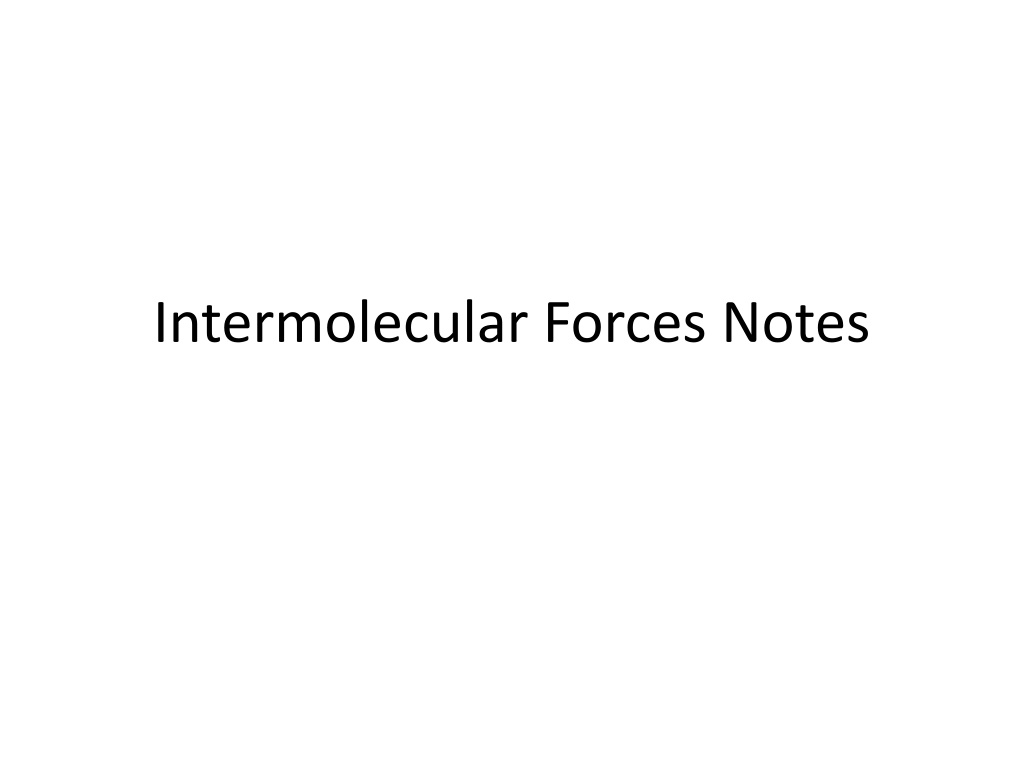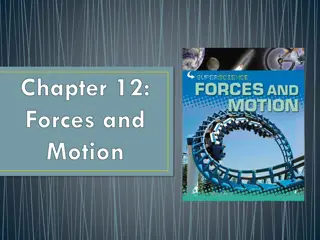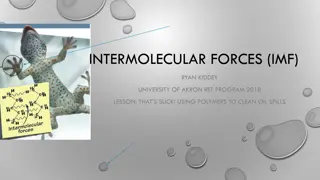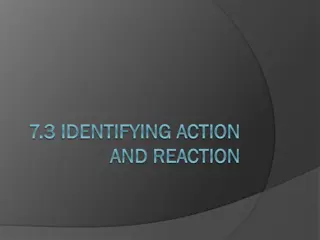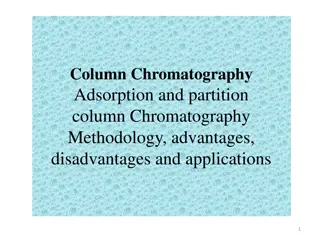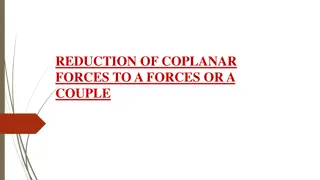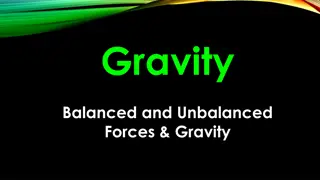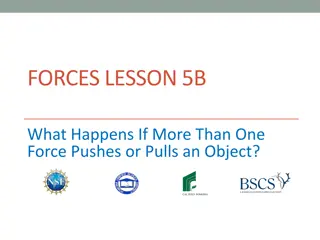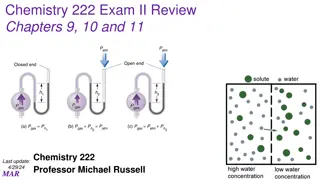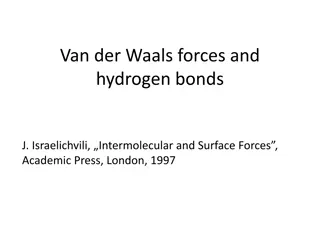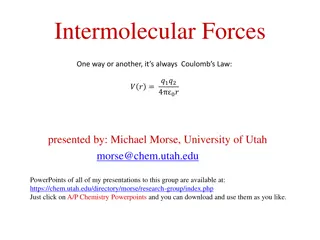Understanding Intermolecular Forces: Strength, Types, and Examples
Intermolecular forces are attractions between molecules, weaker than chemical bonds. They include London dispersion forces, dipole-dipole interactions, and hydrogen bonding. Strength varies, with covalent bonds being the strongest and London dispersion forces the weakest. Different types of intermolecular forces depend on molecule polarity and presence of lone pairs. Examples like Cl2 and CH3I illustrate these concepts in action.
Download Presentation

Please find below an Image/Link to download the presentation.
The content on the website is provided AS IS for your information and personal use only. It may not be sold, licensed, or shared on other websites without obtaining consent from the author. Download presentation by click this link. If you encounter any issues during the download, it is possible that the publisher has removed the file from their server.
E N D
Presentation Transcript
Intermolecular Forces o Intermolecular Forces: attraction between molecules o Much weaker than chemical bonds
Strength of Forces STRONGEST Covalent Bonds (400 kcal) Hydrogen Bonding (12-16 kcal) Dipole-Dipole Interactions (0.5-2 kcal) London Dispersion Forces (<1 kcal) WEAKEST kcal = kilocalorie (unit of energy stored in chemical bonds)
London/Van der Waals o London Dispersion Forces: o Attraction due to the constant motion of electrons oWill cause temporary concentration of charge on one side of an atom/molecule o Exist between ALL molecules
Dipole o Dipole-dipole: o Attraction between polar molecules The squiggly symbol means a partial charge.
An Analogy Dipole-dipole attraction - - - - - - - The two couples are very happy with each other, but the guy is attracted to the other girl.
Hydrogen o Hydrogen Bonding: o Stronger type of dipole- dipole interaction o Occurs only between molecules with lone pairs on center atom AND hydrogen bonded to F, O, or N oHydrogen bonding is FON!
Intermolecular Forces Is the molecule polar? No Yes Does the molecule have lone pairs on the center atom, with H bonded to F, O, or N? London Dispersion Forces No Yes London Dispersion Forces Dipole-dipole London Dispersion Forces Dipole-dipole Hydrogen bonding
Intermolecular ForcesExamples Cl2 The molecule is nonpolar. This molecule has London Dispersion Forces.
Intermolecular ForcesExamples CH3I The molecule is polar. The central atom does not have lone pairs, and H is not bonded to F, O, or N. The molecule has London and Dipole-dipole forces.
Intermolecular ForcesExamples CH2O The molecule is polar. The central atom does not have lone pairs, and H is not bonded to F, O, or N. The molecule has London and Dipole-dipole forces.
Intermolecular ForcesExamples O3 The molecule is polar. The central atom has a lone pair, but does not have H bonded to F, O, or N. The molecule has London and Dipole-dipole forces.
Intermolecular ForcesExamples PF3 The molecule is polar. The central atom has a lone pair, but does not have H bonded to F, O, or N. The molecule has London and Dipole-dipole forces.
Intermolecular ForcesExamples NH4+ The molecule is nonpolar So even though H is bonded to N This molecule has only London Dispersion forces.
Intermolecular ForcesExamples EXTRA H2O The molecule is polar. There is a lone pair. Hydrogen is bonded to F, O, or N. This molecule has London, Dipole-Dipole forces AND hydrogen bonding.
